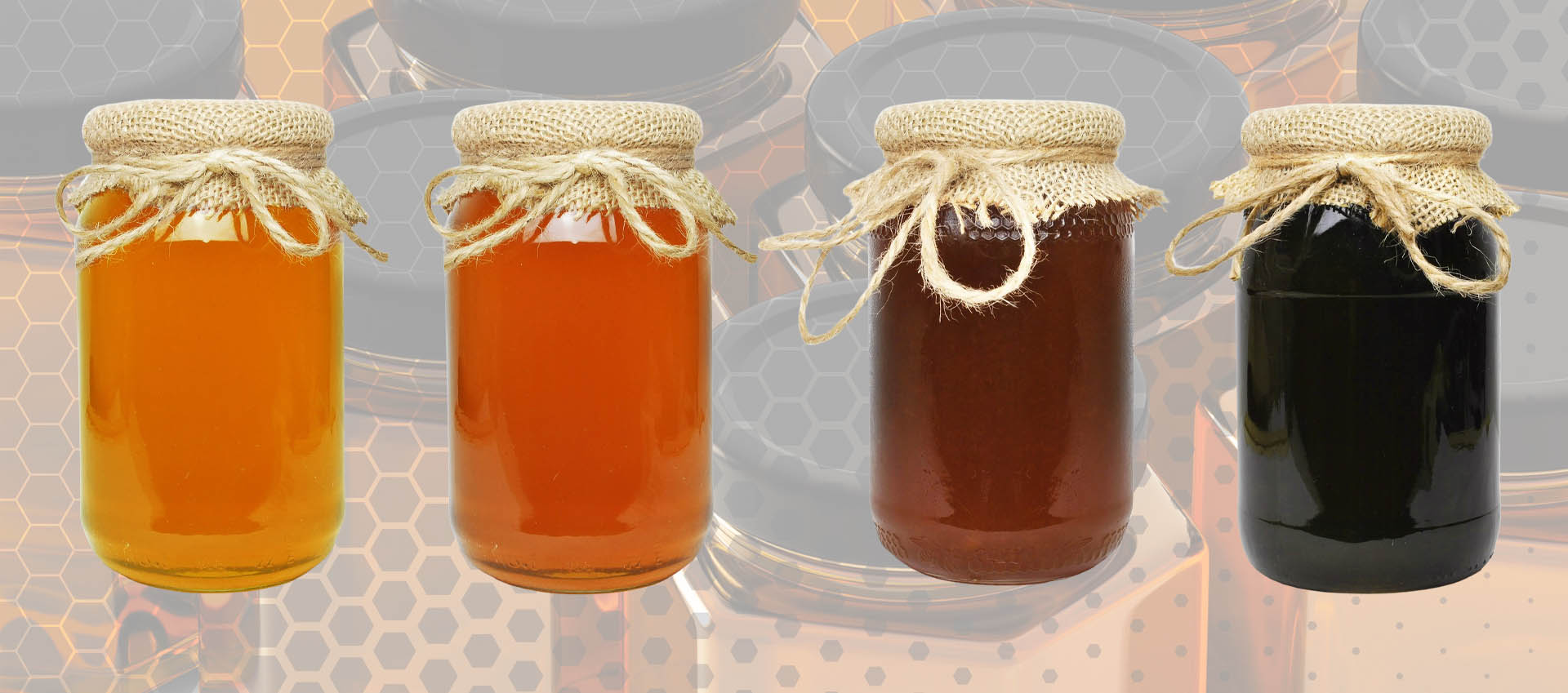
b-qual news September 2024
23 min readAre you up to date with the food label laws?
The information that is required on your honey labelling in Australia and New Zealand is prescribed by the Food Standards Code. Complying with the honey labelling requirements of the Food Standards Code will ensure that your honey can be sold legally. All packaged foods sold in Australia must comply with the labelling requirements stated within the Food Standards Code.
The importance of good labelling
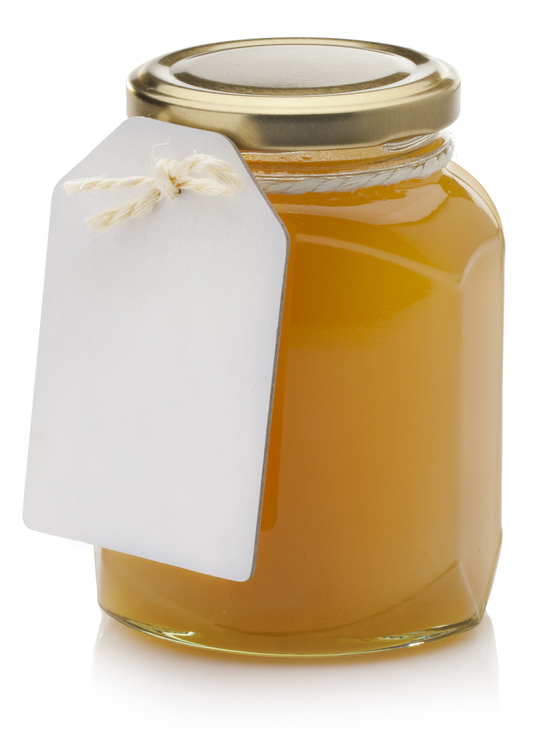
Honey is a product that sells according to its looks and so the information you give on the label is not only a legal requirement but can also be a sales aid. This is usually all the information that the consumer has to go on in deciding whether to buy the product. For example, it is not possible for the consumer to know, just by looking, whether the product is authentic honey.
Therefore, attractive, informative and effective labelling is important. It is best to market honey indicating its exact geographical origin: this gives the consumer confidence in the product, and to some extent to visualise and feel identification with a blossom or a region.
Additional labelling information
In addition to attracting customers to the product, the label on honey should give the following information.
1. The name of the food. Packaged food must be labelled with a name or description that will not mislead consumers. “Honey” is a prescribed name, and that name must appear on the label.
2. Source of the honey (e.g. yellow gum, mixed floral, orange blossom); should also be shown.
3. Weight of the contents (e.g. 500g)
Research suggests that consumers want quick and accurate information to help decide what food to buy.
Food labels are required by law to carry essential information so that consumers are informed of the nature and properties of foods prior to purchase – this includes statements about the presence of allergenic ingredients. Some information may also voluntarily be offered on food labels by food businesses, giving consumers greater information to make informed purchasing choices. Food businesses must also ensure that they are not potentially misleading or deceiving consumers with any claims that are made on food labels (whether intentional or not).
Therefore, food labels need to be clear, consistent and honest. It is against the law for suppliers to mislead or lie about where their food product comes from.
Labelling specific to Australian producers
If a priority food was grown, produced or made in Australia, its country-of-origin label will also feature:
- A kangaroo in a triangle logo to help you quickly identify that the food is Australian in origin.
- A bar chart and text identifying the proportion of Australian content in the food.
As a honey or honey products vendor it is likely that you will be required to comply with the Country of Origin (Australian) Food Labelling Information Standard of 2016 (The Standard).
The standard marks are for food products that were grown, or produced, or made (substantially transformed) with 100% Australian ingredients. The standard mark will have the kangaroo logo, full bar chart and text. All the below are acceptable marks (logos) for raw honey.

Honey is classed as a priority food and the label must be present on the product. It Is illegal to use logos as above without an explanation clearly showing the percentage of Australian content in raw honey.
All examples above should show the full bar infill and include “100% Australian Honey” text.
The words “Australian Honey”, “Product of Australia” “Produce of Australia” “Produced in Australia” or “Made in Australia” are all acceptable. Priority foods can only claim to be produced or grown in Australia if they contain 100 per cent Australian ingredients.
The standard does not set a minimum size for the country-of-origin element on your labels, only that it
must be displayed in its entirety in English, be legible and prominent. In other words, be clearly visible so consumers can understand it.
The standard allows for packages with a surface area of less than 100cm2 to omit the kangaroo and bar chart elements and simply include the explanatory words in a box.
Honey Standards
Honey in the FSANZ Standard is defined as:
Standard 2.8.2 Honey
Note 1 This instrument is a standard under the Food Standards Australia New Zealand Act 1991 (Cth). The standards together make up the Australia New Zealand Food Standards Code
Note In this Code (see section 1.1.2—3):
Honey means the natural sweet substance produced by honeybees from the nectar of blossoms or from secretions of living parts of plants or excretions of plant-sucking insects on the living parts of plants, which honeybees collect, transform and combine with specific substances of their own, store and leave in the honeycomb to ripen and mature.
2.8.2—3 Requirement for food sold as honey
A food that is sold as ‘honey’ must:
(a) be honey; and
(b) contain:
(i) no less than 60% reducing sugars; and
(ii) no more than 21% moisture.
‘Honey’ is a *prescribed name.
In other words, to meet the code, the honey on your frames should be mostly capped (and therefore de-hydrated or “ripened” by your bees). This also means that your honey won’t ferment and will have a longer shelf life.
The composition of honey varies from one floral source to another. The average composition of Australian honey produced from native and exotic plants is: water 15.6%, fructose 42.5%, glucose 30.6%, sucrose 2.9%, minerals 0.16% and other constituents 8.24%.
Honey is a natural food. Every effort must be made to maintain its natural qualities during processing and storage and to ensure it has a long shelf life. It should receive minimum heat treatment.
Product Identification
It is essential that each batch of honey produced be identified so that the product is traceable in the event of a recall (B-QUAL program allows this without any additional recording). Honey recalls are rare due to the stable nature of the food. However, honey is not exempt from the requirements.
The Food Standards Code 1.2.2 has details of lot identification as
A “lot” is defined as a quantity of food which is prepared or packed under virtually the same conditions, usually from a particular preparation or packing unit and during a specific time ordinarily not exceeding 24 hours.
Your lot identification can take many forms however it is typically the harvest, extraction or the packing date.
For example, if you extract honey once in 2018, then your lot identification could be “2018”. In a better year where you extract honey in January, March or April your lot identifications could be “01/18”, “Mar2018”, or “04/2018”.
The lot identification on your honey labelling can also be a best-before date provided you can correlate the best-before date to a specific batch of honey.
The Name and Address of Supplier
All honey labelling must include your name and address. The Food Standards Code 1.2.2 specifies this requirement.
The label must show:
- Your name or your registered business name
- Street address, including number street name, town or suburb, state and post code
- You cannot use a post box number or a website address as an alternative to physical address details. You can include such detail on your packaging but not as the main contact source.
Health or allergy warning statements
Honey on its own does not require any health or allergy warning statements.
- You do NOT have to declare the presence of pollen, propolis or royal jelly on your honey labelling.
- Similarly, your labelling does NOT have to carry a warning about not feeding honey to infants under 12 months of age due to the risk of botulism.
Under the label standard bee pollen only needs to be declared when the pollen itself is presented as food or if pollen is an ingredient in food. It is advisable to add an “advisory statement” if selling bee pollen or propolis separately. An example of an advisory statement can be:
Food: Advisory statement indicating that:
(a) Bee Pollen This product contains bee pollen(b) Or a food containing Bee Pollen as an ingredient. which can cause severe allergic reactions.
Propolis and royal jelly are treated precisely the same. Further information can be found in Food Standards Code Schedule 9 Mandatory Advisory Statements.
Nutritional and ingredient information
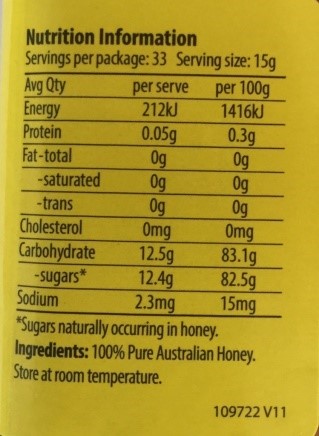
Nutritional information. Nutrition information could be included in your label health claims. Nutrition and health related claims are voluntary but you must be careful of any claims that you make.
Ingredients. With some exceptions, food labels must include a statement of ingredients (the term ingredient includes additives). However as “honey” is a prescribed name, this word must be used on the label and no further breakdown is required (e.g. Ingredients: Raw cold-extracted honey).
The Food Standards Code 1.2.5 states that date marking is not required on food with a best-before date of 2 years or more.
Weights and Measures
In Australia, it is normal to indicate the net weight of the honey in the package rather than volume. The weights should be expressed in kilograms (kg) or grams (g). Weights and measures declarations are regulated in Australia by the Australian National Measurement Institute.
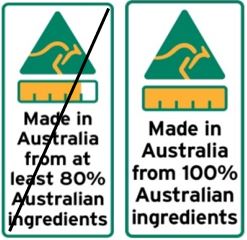
Remember to include 100% text if you produced your own honey.
It is imperative that you never mislead your customers by making representations about your honey that are not true. In general terms, you must be able to substantiate any claims you make, and this may mean that you have to keep documentation in support of your claims. This is where B-QUAL documentation will assist.

For added customer satisfaction include your B-QUAL logo on your container.
Additional Labelling Notes
Lastly, it is valuable if label space allows providing additional product information for the consumer, such as explanations and taste descriptions.
In order to do so use creativity. Some beekeepers provide information to their customers about the granulation of honey and how to liquefy it should it set hard.
It is important to point out that granulation or candying of honey is a natural process, and that the quality of the product is not affected at all, nor has it gone bad.
A text that candied honey may be reliquefied by placing the container in a hot water bath at preferably 35 °C but certainly no more than 45 °C until liquefied would be advisable.
Labelling disclaimer
Label laws are quite comprehensive the above is not intended to be the complete guide to labelling. Laws are administered by each State or Territory please check with your local food authority for complete information on their particular requirements.

Easing the capture of quality data – a brand-new voice input system
Capturing quality B-QUAL data – even with sticky fingers!
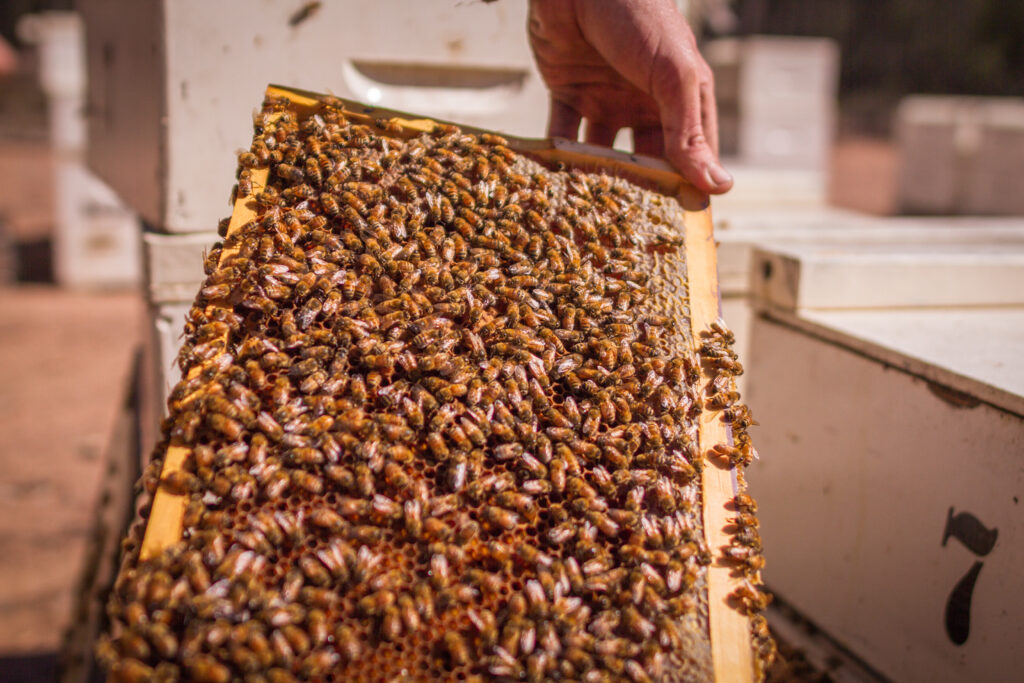
Rather than spending precious time typing observations into B-QUAL after an apiary visit, we have been supported the Australian Government through the Department of Agriculture, Fisheries and Forestry with a Traceability Grants Program – Round 3 grant to develop a mobile-based, hands-free system to record hive observations and the details required for traceability and product quality authentication.
This project brings together B-QUAL Australia, in partnership with Y-Trace, the International Centre for Radio Astronomy Research (ICRAR) at the University of Western Australia and the Noongar Land Enterprise. Together, we are developing a speech-to-text system and bespoke Artificial Intelligence. This innovative system will capture observations in the field, even while actively working. For safety, earphones were selected to capture speech whilst still allowing communication with fellow workers.
Our project is not just about innovation but also about security. By leveraging Blockchain and the Interplanetary File System (IPFS), we are creating an immutable record of traceability data. This secure system will safeguard terroir information required for a fine food, making it publicly available to export customers to prove authenticity. Security is a top priority, and we are committed to ensuring the integrity of your data for all stakeholders.
The current challenges with the B-QUAL honey traceability system are largely due to inefficiencies in data input. While the digitisation of B-QUAL led to the quick adoption of the system, the input of observations was slow. This lack of data input seems to be a widespread issue in the industry, which is understandable when trying to enter data while wearing gloves or dealing with sticky fingers and meeting the demands of beekeeping husbandry.
A conversation with the astronomers at ICRAR, University of Western Australia, identified that this issue could be resolved through voice capture, even with the challenge of different accents, and converted into valuable data to prove source authenticity. We realised this data capture needed to be linked to data security and the controlled release by the beekeeper to customers.
Beekeepers are particularly sensitive to sharing precise apiary site locations and some biosecurity data. We know this data protection can be achieved using blockchain. The project team will seek agreement on the data needed for customer confidence in authenticity.
This one-year project is already underway, and we are excited about the progress. If you’d like to learn more or discuss the project, please email us at hello@ytrace.com.au or call Liz Barbour on 0406 505 525.
Compliance with OH&S systems
Getting support
Considering the ever-changing HR and OH&S landscapes, it is important for Business Owners and Operators to stay ahead of the curve and understand the impact of legislative changes upon their business. It is also a statutory obligation for all businesses to have a compliant OH&S system.
It is our intention to both proactively and strategically protect the business owners and operators regarding HR and OH&S. It is important for us to assist our members in having the relevant Policy, Process and Proof to facilitate this.
That is why we work with you 24/7/365. It is also our intention that these systems assist with enhancing the return on investment form your labour fixed costs, which I personally feel more than covers the cost for this compliance.
We are here to take work off your table and provide you with the peace of mind and confidence that you are supported and protected as both a business and an individual.
We provide peace-of-mind and confidence.
Peninsula is “NOT” a Government organisation. We are a proudly independent company helping Business Owners proactively and strategically protect their businesses regarding HR and OH&S.
Let us take the load.
Peninsula will work with you to navigate and manage confusing workplace requirements. We are here to support YOU.
How does it work?
By advising, assisting and supplying robust Policy, Process and Proof, (record keeping systems).
We take a huge administrative component from your business. By customising and providing employment documentation including contracts, employee handbooks, employee letters and correspondence, performance management and disciplinary materials and a variety of other bespoke materials.
By providing 24/7 advice and support in relation to FairWork and Work Safe legislation, compliance, managing employment relations matters and holding difficult conversations. In fact, anything to do with Employment Relations and Work Health and Safety.
Providing access to our Award-Winning Legal Partner for legal representation.
Safeguarding our clients against the financial costs of workplace claims. This is subject to the terms and conditions of the attached PDS.
PLUS our BrightSafe and BrightHR Software Solutions, which can help you get on top of Work Health and Safety compliance, rostering, leave management, expense management and document management.
Additional resources for review
Please take a moment to view this short video clip.
Please also click on the following link for Trustpilot reviews. We have an excellent 4.8 stars out of five across over 1800 reviews.
https://au.trustpilot.com/review/employsure.com.au
With over 31,000 clients just like you, Peninsula is a brand you can trust at a price you can afford.
Get in touch for details and to sign up
Office: Phone: 07 4994 9820
B-QUAL email: admin@bqual.com.au
B-TRACE email: admin@btrace.com.au
Join B-TRACE QA and Food Safety Program:
“Accurate record keeping is the backbone of a successful food safety program.”

Food safety is crucial for maintaining health standards and ensuring that food doesn’t cause harm to consumers. One vital aspect that everyone involved in food production, from farmers, food manufacturers, and beekeepers must focus on is strict record keeping. Joining the B-TRACE QA and Food Safety Program is one way to help achieve this goal and enhance food safety practices by using the B-TRACE hive management app.
The B-TRACE program encourages small medium enterprise beekeeping operators to put reliable, systematic practices in place to ensure that all aspects of food safety are handled correctly.
What is B-TRACE?
B-TRACE could stand for “Building Traceability Assurance for Compliance and Excellence.” The program is designed to equip beekeepers with the tools and knowledge they need to ensure food safety from apiary to consumer.
The primary aim of B-TRACE is to enable operators to track and monitor every aspect of honey production. This includes gathering, processing, packaging, and distribution. Keeping accurate records allows businesses to pinpoint any problematic areas before they lead to significant issues.
Why Join B-TRACE?
There are several reasons why being a part of the B-TRACE QA and Food Safety Program is beneficial:
1. **Enhanced Safety Standards**: By joining B-TRACE, you align your practices with industry standards that emphasize food safety and quality.
2. **Improved Traceability**: With the use of the B-TRACE hive management app you can easily trace products. This is critical in the event of a food recall.
3. **Better Consumer Confidence**: When customers know that a company is dedicated to safety, they are more likely to trust its products.
4. **Regulatory Compliance**: Participating in B-TRACE helps ensure that your organization meets all industry standards and requirements for food safety and record keeping.
**Statistics show** that businesses with strong record keeping are less likely to experience safety violations. Keeping accurate records allows companies to identify trends and improve their safety protocols effectively. As part of B-TRACE, you will have access to templates and software designed to simplify this process.
Benefits of Effective Record Keeping
1. **Liability Protection**: In case of illness reports or food recalls, having excellent records can protect your business legally.
2. **Operational Efficiency**: When everything is documented, it becomes easier and quicker to find crucial information, thereby allowing for better decision-making.
3. **Employee Training**: Records provide a history of incidents and safety measures. They are valuable tools for training employees on food safety practices.
4. **Quality Control**: Systematic record keeping can help identify areas for quality improvement.
Make the move now contact BTRACE via www.btrace.com.au or phone 07 4994 9820

Notices
B-TRACE Audits.
If you have not yet submitted your online audit for the current year, please do so to keep your accreditation up to date.
The online audit form is available in the members section of the B-TRACE website or alternatively contact admin@btrace.com.au and we will email one to you.
Once completed email back to the office.
Allow 5-7 days for audit review and issue of the accreditation certificate.
B-QUAL and/or B-TRACE logos.
Pre-printed logo labels are available from the office.
B-TRACE 30mm lid labels full colour $26.50/1000
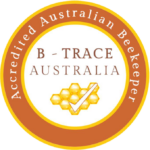
B-QUAL 12mm jar labels full colour $ 22.50/1000.
If you are printing your own labels high Res’ artwork is available free of charge.
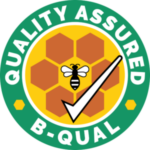
B-QUAL Self Assessments.
If you have purchased your Approved Supplier Manual but not yet submitted the self-assessments, you cannot proceed with further certification until self-assessments are submitted.
The assessments are in the first section of the manual. Complete both assessments and send to admin@bqual.com.au for review and certificate issue.
If you have any queries about assessments contact admin@bqual.com.au for further assistance.
Members section of websites.
To access the member section of the B-QUAL and B-TRACE websites you need to create an account.
To do this email the office requesting an account for either website.
Once the account is set you will receive an email requesting to log in and change the initial password. Remember that you must have a separate account for the members section, your app or other passwords will not work.
Our Sponsors:
We acknowledge and thank Steritech and the CMV Group for their valuable ongoing support of B-QUAL and B-TRACE which assists us to continue to participate in research and industry development works which we see as important to our industry.

Please support those who support us.
Contact details
General enquiries for B-QUAL & B-TRACE:
Office: All enquiries. Phone: 07 4994 9820
B-QUAL email: admin@bqual.com.au
B-TRACE email: admin@btrace.com.au
Newsletter disclaimer:
Material and information published in the B-QUAL newsletter, is produced for general information only. Although published in good faith, the company and/or any officer of the company will not be liable for any loss suffered by any person for action taken on the basis of such information.
